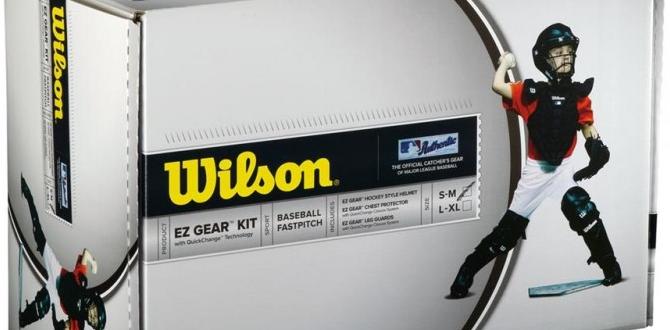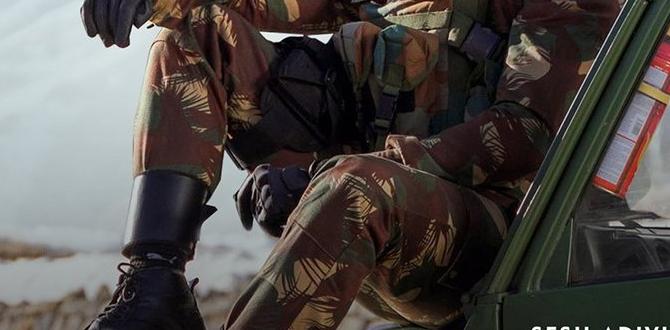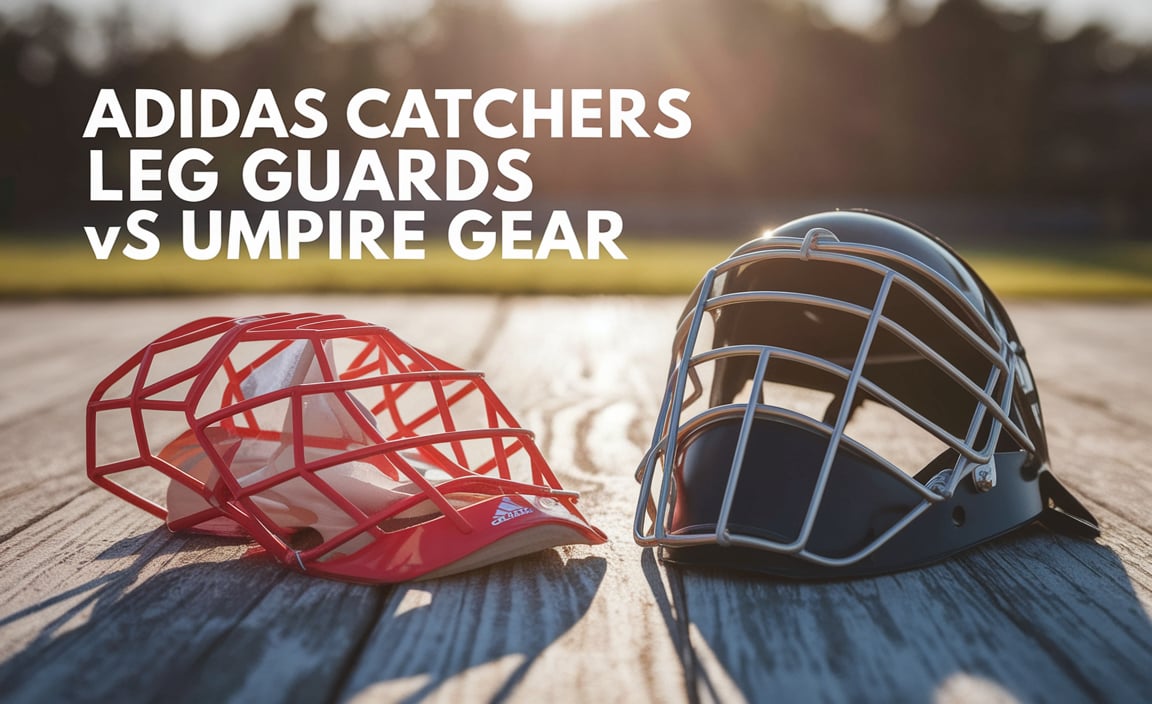Quick Summary: Finding affordable youth catcher gear doesn’t mean sacrificing protection or performance. This guide helps parents and young catchers select essential, budget-friendly equipment that ensures safety, comfort, and confidence behind the plate, so every player can focus on the game.
Cheap Youth Catcher Gear: Your Essential Guide to Staying Protected on a Budget
Stepping behind the plate as a catcher is a huge responsibility, and it requires the right gear. But as any parent knows, specialized equipment can add up quickly, especially for growing kids. The good news is, you don’t need to break the bank to get reliable protection for your young catcher. With the right knowledge, you can find high-quality, affordable gear that keeps them safe and comfortable.
This guide is here to help you navigate the world of youth catcher gear without emptying your wallet. We’ll cover the absolute essentials, what to look for, and where you can find great deals. Get ready to equip your young catcher for success!
Why Proper Catcher Gear Matters (Even on a Budget)
Catching involves facing high-speed pitches and plays at the plate, making protective gear non-negotiable. Even at younger ages, impacts can be significant. Proper gear doesn’t just prevent injuries; it also builds confidence. When a young player feels secure and protected, they can focus on their game, improving their skills and enjoying the position even more.
Think of catcher gear like a superhero’s armor – it allows them to do their job bravely and effectively. While top-of-the-line gear offers advanced features, a solid foundation of essential protection is available at much more accessible price points. The key is understanding what’s truly essential for youth players.
The Essential Catcher Gear Checklist for Youth Players
Every catcher needs a core set of protective equipment. When looking for affordable options, focus on fulfilling these key components. We’ll break down each piece and what to prioritize:
1. Catcher’s Helmet (Mask & Throat Guard)
This is arguably the most critical piece of equipment. It protects the head, face, and throat from foul balls, wild pitches, and collisions. For youth players, look for helmets that are:
- Lightweight: Easier for young players to wear and move in.
- Well-ventilated: Helps keep them cool during long games and practices.
- Secure Fit: Adjustable straps are a must to ensure it stays in place.
- Durable Construction: Even budget helmets should be made from robust materials.
Many youth catcher helmets are combination units, meaning the mask is integrated into the helmet. This is often a more affordable and convenient option. Always check that the helmet meets relevant safety standards, such as those set by SEI (Safety Equipment Institute).
2. Chest Protector
The chest protector shields the torso from errant pitches and wild throws. Key features for youth chest protectors include:
- Adequate Padding: Look for firm, impact-absorbing padding.
- Good Coverage: It should protect the chest, abdomen, and upper thighs.
- Adjustable Straps: For a snug, secure fit that doesn’t shift.
- Flexibility: While protective, it shouldn’t be so stiff that it hinders movement.
Many youth models are designed to be lighter and somewhat shorter than adult versions, making them more comfortable for younger players.
3. Leg Guards
Protecting the shins, knees, and feet is vital. Catcher’s leg guards should offer:
- Full Coverage: From the knee down to the toe.
- Secure Strapping System: Multiple straps ensure they stay put during dynamic movements.
- Durable Shell: A hard outer shell is essential for impact resistance.
- Removable/Adjustable Foot Guards: Some models have this feature for versatility.
Comfort is also a factor here; look for models with sufficient padding on the inside to prevent chafing and aid in shock absorption.
4. Catcher’s Mitt
This is the specialized glove designed for catchers. It’s typically larger and more heavily padded than a fielder’s glove, with a deeper pocket. For youth catchers, consider:
- Size: Youth gloves are generally smaller (e.g., 30-34 inches). Check age/league recommendations.
- Pocket Depth: A deeper pocket helps secure pitches.
- Break-in Period: While all gloves need breaking in, some materials are easier to work with. Look for good quality leather or synthetic blends. Gloves that come pre-softened can be a great budget-friendly option.
- Padding: Sufficient padding is crucial for impact absorption.
A well-worn-in, properly sized mitt is essential for framing pitches and making quick transfers.
5. Protective Cup (Jockstrap)
This is often overlooked but is incredibly important, especially for male catchers, to protect the groin area. Ensure it:
- Fits Snugly: It should be held firmly in place by a supportive athletic cup or jockstrap.
- Allows Movement: It shouldn’t restrict the catcher’s ability to squat or move.
The cup itself should be made of hard, impact-resistant material.
Finding Affordable Catcher Gear: Strategies That Work
Now that you know what to look for, here’s how to find it without spending a fortune:
1. Buy Gear Sets or Packages
Many manufacturers offer catcher’s gear as a complete set (helmet, chest protector, leg guards). These packages are almost always cheaper than buying each item individually. You get all the essential protective pieces at a bundled discount. Brands like Franklin Sports, Easton, and Wilson often have great value sets for youth players.
2. Shop During Sales and Off-Season
Keep an eye out for major sales events like Black Friday, Cyber Monday, and end-of-season clearances. Retailers often discount sporting goods significantly during these times. If you can plan ahead, buying gear in the fall or winter, after the baseball season has ended, can yield substantial savings.
3. Explore Reputable Online Retailers
Websites like BaseballSavings.com,justbats.com, and Dick’s Sporting Goods (both online and in-store) frequently offer competitive pricing and discounts. Amazon is also a good source for finding various brands and price points. Always read reviews to gauge the quality and “true fit” of the gear.
4. Consider Used Gear (with Caution)
For non-critical items or if the budget is extremely tight, well-maintained used gear can be an option. However, always prioritize safety. For helmets and chest protectors, ensure there are no cracks, significant dents, or signs of wear that compromise their protective integrity. Leg guards and mitts can be purchased used more readily, as their protective qualities are less likely to be compromised by minor cosmetic wear. Check out local sports consignment shops, eBay, or Facebook Marketplace.
Important Note: When evaluating used gear, especially helmets, if you have any doubt about its structural integrity or that it might have been involved in a significant impact, it’s best to invest in new. The National Highway Traffic Safety Administration (NHTSA) provides guidance on helmet safety that, while for automotive use, emphasizes the potential for hidden damage after impacts, a principle that applies to all protective headgear.
5. Look for Beginner or “Entry-Level” Lines
Most major sporting goods brands have “entry-level” or “youth” lines of equipment. These are designed to be more affordable while still meeting safety standards. They might not have all the advanced features or lightweight materials of pro-level gear, but they offer excellent value for young players just starting out.
6. Don’t Forget Essential Accessories
While focusing on the main gear, remember smaller but crucial items:
- Catcher’s Bag: To carry all the gear. Look for durable, affordable options often bundled with gear sets or available separately from brands like Rawlings or Atec.
- Sliding Shorts/Compression Shorts: For comfort and protection during slides.
- Athletic Tape: For potential ankle support or blister prevention.
Understanding Catcher’s Mitt Sizing for Youth
Getting the right size catcher’s mitt is crucial for control and comfort. While specific measurements can vary slightly by brand, young catchers typically use mitts in the:
| Age Group (Approximate) | Glove Size Range (Inches) |
|---|---|
| 4-7 Years Old | 28-30 inches |
| 8-12 Years Old | 30-33 inches |
| 13+ Years Old / Teenagers | 32-34 inches (can sometimes overlap with adult sizes) |
It’s always best to try the mitt on if possible. The index finger should fit comfortably in the designated slot, and the mitt should allow for a secure closure around the ball.
Are All Affordable Gear Options Safe?
This is a legitimate concern. When looking for “cheap” gear, the priority must always be safety and protection. Here’s how to ensure you’re not compromising:
- Check for Certifications: Look for helmets that are SEI certified. While not all gear components will have specific certifications like helmets, reputable brands will adhere to industry safety standards.
- Read Reviews: Pay close attention to what other parents and coaches say about the durability and protective qualities of the gear. Look for comments about how well it held up to impacts.
- Materials Matter: Even at a lower price point, the gear should be constructed from sturdy plastics for the shell of the helmet and leg guards, and robust padding for the chest protector and mitt. Avoid anything that feels flimsy or cheap.
- Fit is Safety: Gear that doesn’t fit properly won’t offer adequate protection. Ensure adjustable straps allow for a secure and snug fit.
Affordable doesn’t have to mean unsafe. It means finding gear that meets basic protective needs without premium features. Organizations like the National Federation of State High School Associations (NFHS) provide general guidelines on equipment standards that can inform your choices.
Maintaining Your Youth Catcher Gear for Longevity
Even budget-friendly gear will last longer and perform better if you take care of it. Here are some tips:
- Clean Regularly: Wipe down helmets, masks, and leg guards with a damp cloth. For chest protectors, use mild soap and water if needed, but ensure they dry thoroughly.
- Air Out Gear: After every use, especially in humid weather, let the gear air out completely to prevent mildew and odors.
- Mitt Care: For leather mitts, a good conditioner applied sparingly can keep the leather supple. Avoid over-conditioning, which can make the mitt too soft. Learn proper techniques for breaking in a youth mitt if it’s not pre-softened. Websites like Baseball America often have guides on glove care.
- Check for Damage: Periodically inspect all gear for cracks, loose straps, or worn padding. Address any issues promptly.
Frequently Asked Questions (FAQ)
Have more questions about getting your young catcher set up with affordable gear? Here are some common ones:
Q1: What is the most important piece of catcher’s gear?
A: The helmet is the most critical piece of gear, protecting the head, face, and throat from serious injury. Ensuring it fits properly and is in good condition is paramount.
Q2: Can I use adult-sized gear for a young player?
A: It’s generally not recommended. Adult gear is too large and heavy for most youth players, reducing mobility and potentially increasing the risk of injury due to poor fit. Always opt for youth-specific sizing.
Q3: How often do I need to replace youth catcher gear?
A: This depends on the player’s growth, the frequency of use, and the wear and tear on the gear. Helmets might need to be replaced sooner if the player outgrows them or if they sustain a significant impact. Mitts will wear out with use and may need replacing every 1-3 seasons depending on quality and usage. Chest protectors and leg guards can often last longer.
Q4: Are there specific safety standards for youth catcher gear?
A: For helmets, look for the SEI certification mark, indicating it’s been tested by an independent third party. While other gear components may not have specific certifications, purchasing from reputable sporting goods brands ensures they meet general safety expectations for athletic equipment.
Q5: What’s the difference between a youth catcher’s mitt and a fielder’s glove?
A: Catcher’s mitts are larger, rounder, and have more padding with a deeper pocket designed to catch fast pitches. Fielder’s gloves are typically smaller, flatter, and designed for scooping ground balls and catching fly balls.
Q6: How do I ensure a good fit for leg guards?
A: Leg guards should fit snugly around the shin and knee without being constricting. When the player is in a catching stance, the guards should cover the entire lower leg and extend to the toe of their shoe. Ensure the straps are secure and don’t cause chafing.
Conclusion
Equipping a young catcher doesn’t have to be a costly endeavor. By understanding the essential components and employing smart shopping strategies, you can find high-quality, protective gear that fits your budget. Focus on safety, proper fit, and durability, and you’ll set your young player up for a confident and successful season behind the plate. Remember that well-maintained, affordable gear can offer excellent protection, allowing the focus to remain on skill development and the pure joy of playing baseball.







